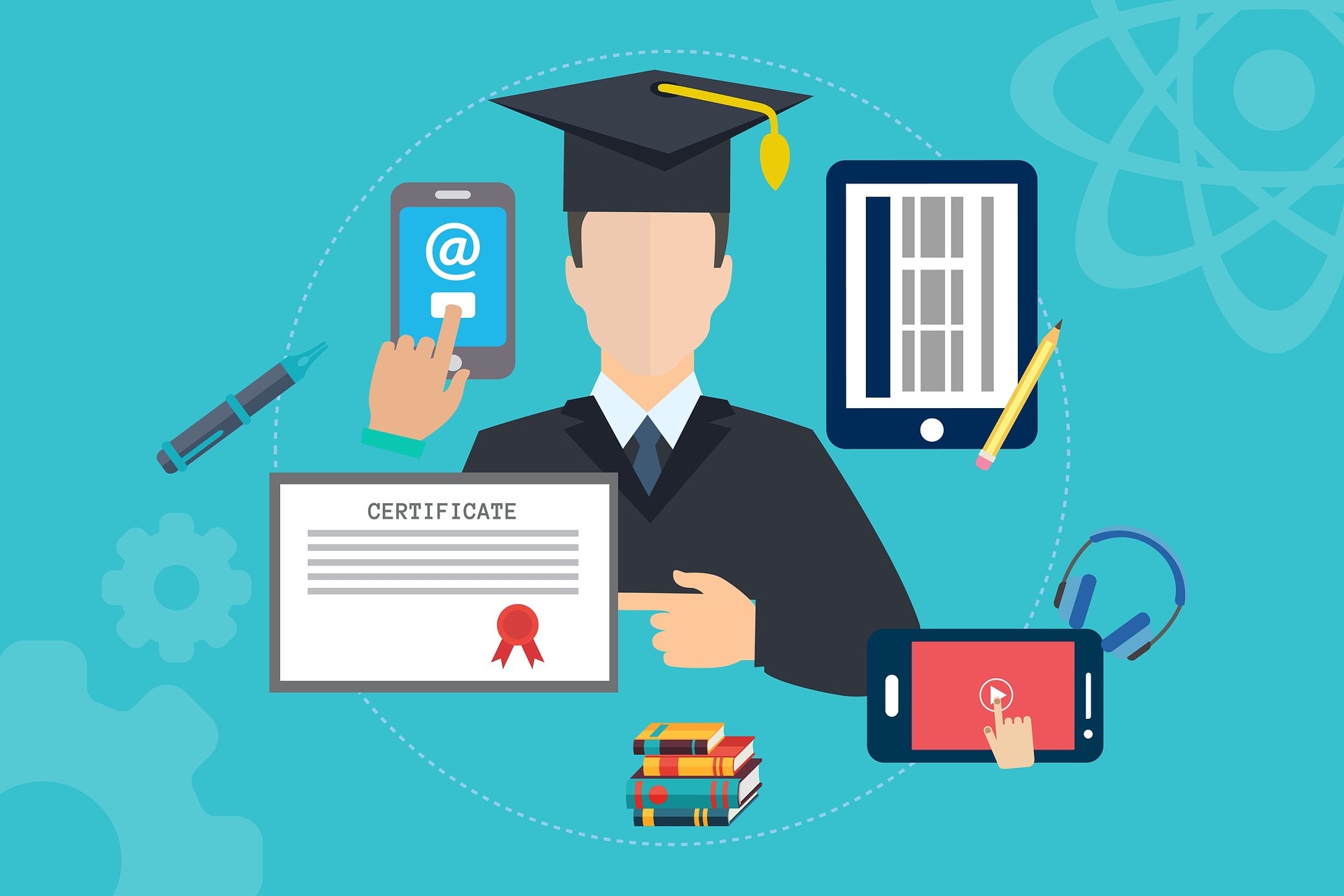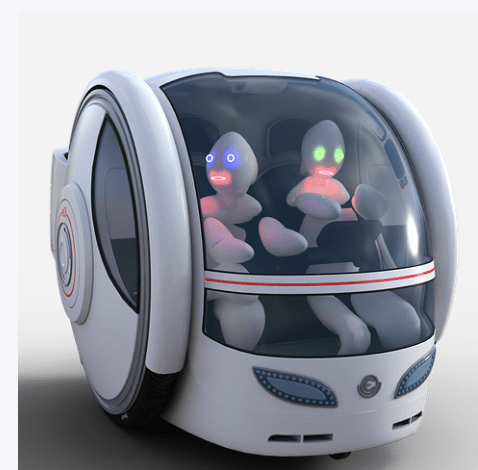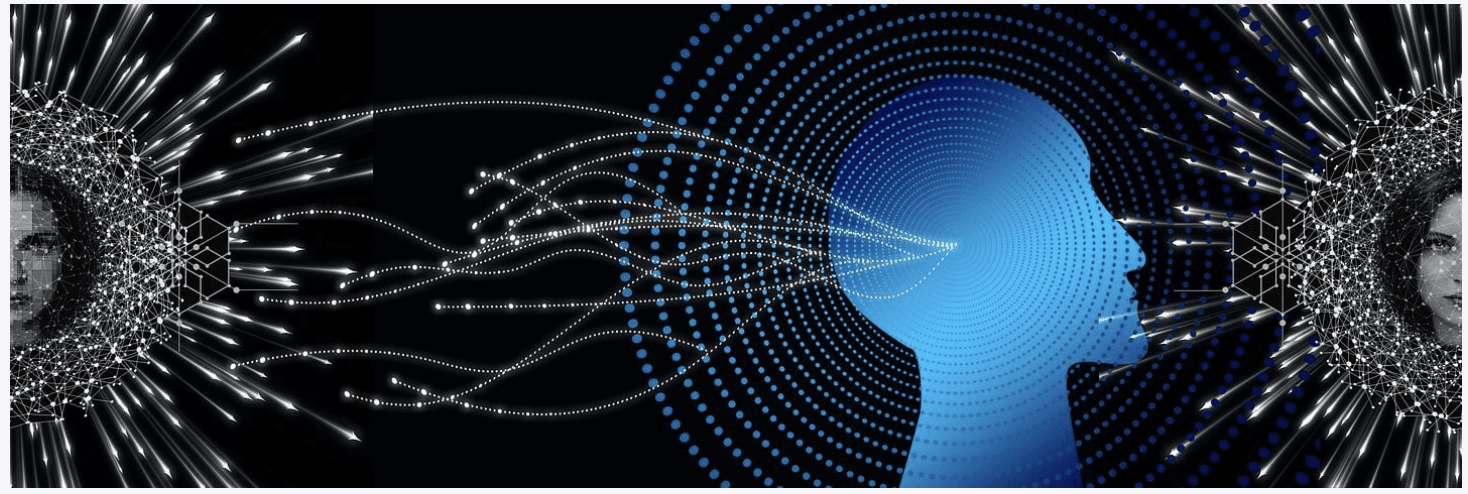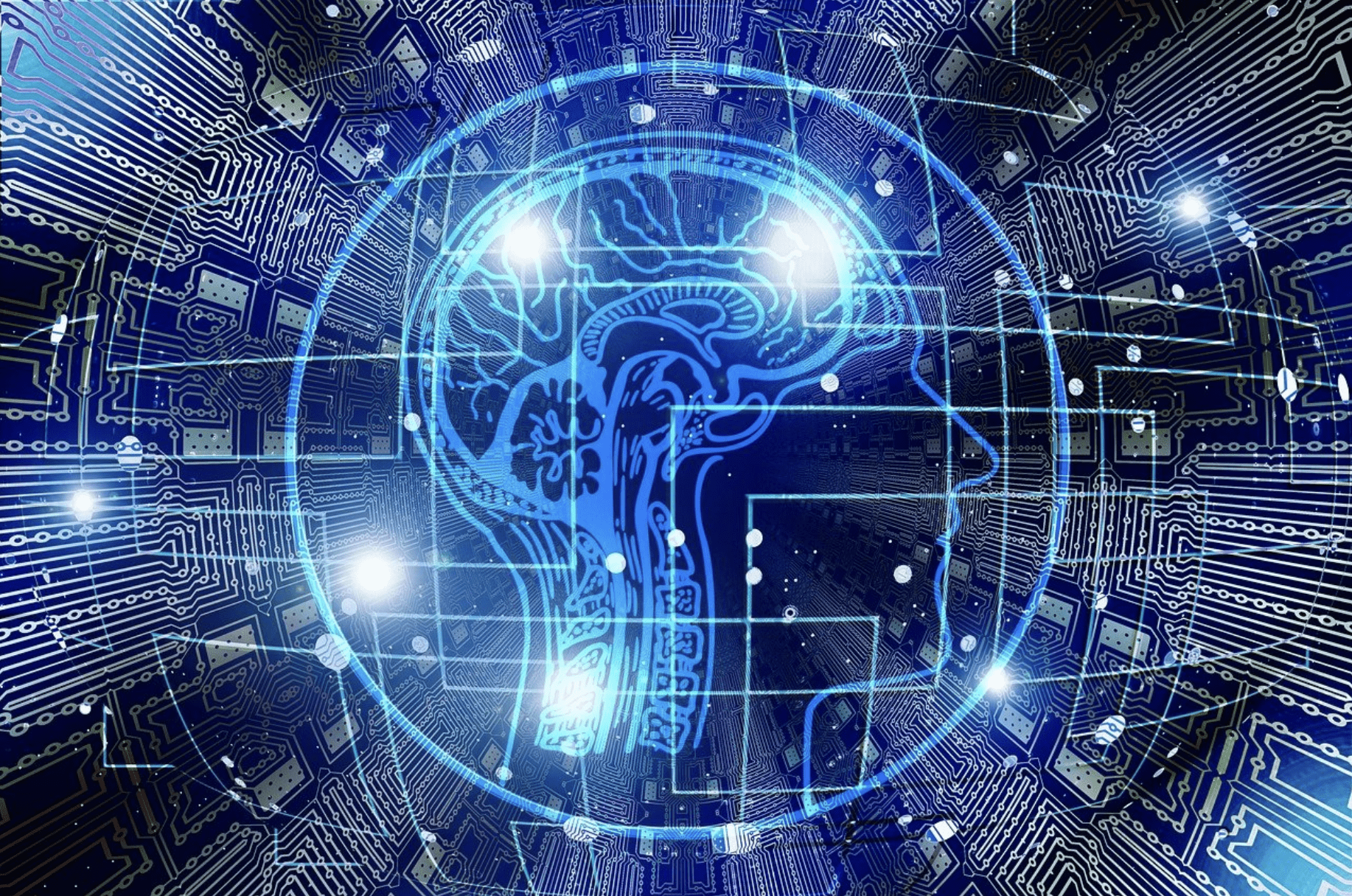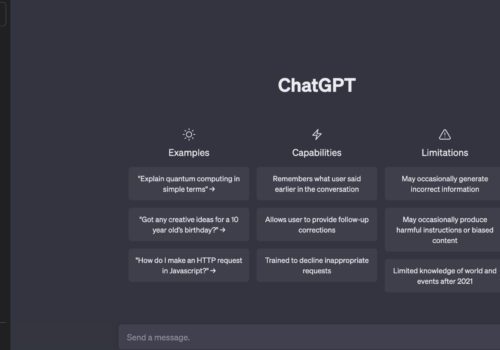As a technological geek, I am fascinated by the evolution of AI (Artificial Intelligence) and how it has transformed the world we live in today.
AI has come a long way since its inception in the 1950s, and it is now a ubiquitous technology that is changing the way we work, communicate, and live our lives.
If the future of AI seems like it will change quickly, that’s because AI innovations are happening so quickly right now that it’s hard to keep up.
The Portuguese poet Luís Vaz de Camões wrote: “Times change, as do our wills, What we are – is ever-changing; All the world is made of change, And forever attaining new qualities.”
In fact, artificial intelligence is changing people’s futures in almost every field. It is already the main force behind new technologies like big data, robotics, and the Internet of Things (IoT).
Tools like ChatGPT and AI art generators are also a driving force behind generative AI, which will continue to be a technological innovator in the foreseeable future.
About 44% of companies want to invest a lot of money and effort into AI and use it in their businesses. In 2021, IBM inventors received 9,130 patents, 2,300 of which were related to AI.
AI seems likely to change (and keep changing) the world. But in what way?
The Evolution Of AI:
The evolution of AI can be divided into three main stages: rule-based systems, machine learning, and deep learning.
Source: Pexels
1. Rule-based systems
The first stage of AI was characterized by rule-based systems, which used a set of pre-defined rules to make decisions and carry out tasks.
These systems were limited in their ability to learn from data, as they were only able to make decisions based on the rules that were programmed into them.
Despite their limitations, rule-based systems were still used in a variety of applications, including expert systems for medical diagnosis and decision support systems for business.
2. Machine learning
The second stage of AI began in the 1990s with the introduction of machine learning algorithms. These algorithms enabled machines to learn from data and to improve their performance over time through a process of trial and error.
Machine learning has been used in a wide range of applications, from image recognition and natural language processing to fraud detection and recommendation systems.
Some of the most popular machine learning algorithms include decision trees, neural networks, and support vector machines.
3. Deep learning
The third and most recent stage of AI is deep learning, which has enabled machines to learn from unstructured data such as images, videos, and audio.
Deep learning algorithms are based on artificial neural networks that simulate the way the human brain processes information.
Deep learning has been used in a wide range of applications, including image and speech recognition, natural language processing, and autonomous driving.
Some of the most popular deep learning frameworks include TensorFlow, Keras, and PyTorch.
The Impact Of AI On Society
Artificial Intelligence (AI) has become an increasingly influential technology, affecting various aspects of our daily lives. While it offers significant benefits, it also poses potential risks and ethical considerations.
Source: Pexels
Here are some of the ways in which AI is impacting society, along with recent statistics and examples.
1. Employment
AI is expected to disrupt the labor market, leading to changes in the nature and quantity of jobs available.
According to a report by the World Economic Forum, the adoption of AI and automation will, by 2025, lead to the displacement of around 85 million jobs.
However, it is also expected to create 97 million new jobs globally, mainly in the fields of computer science, engineering, and mathematics.
Source: Pexels
Examples:
- Amazon is using robots to automate warehouse operations, reducing the need for manual labor.
- The healthcare industry is utilizing AI algorithms for medical diagnosis and personalized treatment plans, creating new job opportunities for healthcare professionals.
2. Healthcare
AI is already being used in healthcare to improve patient outcomes and reduce costs. AI algorithms can analyze medical images and patient data, identifying patterns that could be difficult for doctors to detect.
It is also used to develop personalized treatment plans based on a patient’s genetic makeup and medical history.
Examples:
- Google’s DeepMind Health is using AI to analyze medical images to detect early signs of eye diseases, such as diabetic retinopathy.
- IBM’s Watson Health is using AI to develop personalized cancer treatment plans based on a patient’s DNA.
3. Education
AI has the potential to transform education by providing personalized learning experiences to students. It can analyze a student’s learning style and provide tailored lessons and feedback.
It can also reduce the workload for teachers by automating tasks such as grading and lesson planning.
Source: Pexels
Examples:
- Carnegie Learning’s AI platform provides personalized math tutoring to students, analyzing their strengths and weaknesses to create a customized learning plan.
- Knewton’s adaptive learning platform uses AI to personalize learning experiences, adjusting the content and difficulty level of lessons based on a student’s performance.
4. Social Media
Social media platforms extensively use AI to analyze user data and behavior, leading to a more personalized and engaging user experience.
However, there are concerns about the ethical implications of AI in social media, including issues related to privacy, bias, and the spread of misinformation.
Source: Pexels
Examples:
- Facebook’s algorithm uses AI to suggest content that is likely to be of interest to a user based on their browsing history and interactions on the platform.
- Twitter’s AI system is used to detect and remove spam and malicious content from the platform, creating a safer and more positive user experience.
The Near Future Of AI
The near future of AI promises to be exciting, with many new applications and advancements on the horizon. Here are some examples of the near future of AI, along with recent statistics.
1. Autonomous Vehicles
Autonomous vehicles are expected to become more common in the near future, with companies such as Tesla, Waymo, and Uber investing heavily in this technology.
According to a report by Allied Market Research, the global autonomous vehicle market is expected to reach $556.67 billion by 2026, growing at a CAGR of 39.47% from 2019 to 2026.
Source: Pexels
Examples:
- Waymo, a subsidiary of Alphabet, has been testing its autonomous vehicles in Arizona and plans to launch a commercial service in the near future.
- Tesla is working on developing fully autonomous vehicles and has already introduced several advanced driver assistance features.
2. Natural Language Processing
Natural Language Processing (NLP) is a subfield of AI that focuses on the interaction between computers and humans through natural language.
It has numerous applications, including virtual assistants, chatbots, and language translation.
According to a report by MarketsandMarkets, the global NLP market is expected to reach $35.1 billion by 2026, growing at a CAGR of 21.5% from 2021 to 2026.
Examples:
- Google’s Assistant uses NLP to understand and respond to user queries, allowing for more natural and conversational interaction.
- Amazon’s Alexa can perform a wide range of tasks, from setting reminders to controlling smart home devices, using NLP to understand user commands.
3. Healthcare
AI is already being used in healthcare to improve patient outcomes and reduce costs, and this trend is expected to continue in the near future.
A report by Tractica predicts that the global AI healthcare market will reach $36.1 billion by 2025, growing at a rate of 41.5%.
Source: Pexels
Examples:
- The FDA has approved several AI algorithms for medical diagnosis and treatment planning, including an algorithm that can detect diabetic retinopathy.
- Researchers are using AI to develop new drug treatments. A recent study used AI to identify a potential drug candidate for Alzheimer’s disease.
4. Cybersecurity
AI is increasingly being used to improve cybersecurity. Its ability to analyze large amounts of data and detect patterns that could indicate a cyberattack makes it a valuable tool.
According to a report by MarketsandMarkets, the global AI in cybersecurity market is expected to reach $38.2 billion by 2026, growing at a CAGR of 23.3% from 2021 to 2026.
Source: Pexels
Examples:
- IBM’s Watson for Cybersecurity uses AI to analyze vast amounts of security data, helping to identify potential threats and vulnerabilities.
- Darktrace’s Enterprise Immune System uses AI to detect and respond to cyberattacks in real-time, improving organizations’ security posture.
AI And The Privacy Risks Involved:
As AI continues to become more advanced and widespread, there are growing concerns about the privacy risks associated with this technology. Here are some examples of AI and privacy risks, along with recent statistics.
1. Facial Recognition Technology
Facial recognition technology is being used in various contexts, including law enforcement, advertising, and social media.
However, it raises significant privacy concerns, as it can be used to track people’s movements and activities without their consent.
According to a report by the Pew Research Center, 56% of Americans are not comfortable with companies or the government using facial recognition technology.
Source: Pexels
Examples:
- In 2019, the San Francisco Board of Supervisors banned the use of facial recognition technology by the police and other government agencies, citing concerns about privacy and civil liberties.
- A recent study by the National Institute of Standards and Technology found that many commercial facial recognition algorithms have higher error rates for people with darker skin tones, raising concerns about potential bias and discrimination.
2. Smart Home Devices
Smart home devices, such as Amazon’s Alexa and Google Home, are becoming increasingly popular, but they also raise privacy concerns as they collect data about users’ activities and conversations.
According to a survey by the Pew Research Center, 81% of Americans feel that the potential risks of companies collecting data about them outweigh the benefits.
Examples:
- In 2019, it was revealed that Amazon’s Alexa was recording conversations and sending them to third-party contractors for analysis without users’ knowledge or consent.
- A recent study by Consumer Reports found that many smart home devices lack basic privacy and security protections, making them vulnerable to hacking and data breaches.
3. Social Media
Social media platforms, such as Facebook and Twitter, are using AI to analyze user data and target advertising. However, this raises privacy concerns, as users’ personal information is being used without their knowledge or consent.
According to a survey by the Pew Research Center, 79% of Americans are not confident that companies will use their personal information in a responsible way.
Source: Pexels
Examples:
- In 2018, it was revealed that Cambridge Analytica had harvested the data of millions of Facebook users without their consent and had used this data to influence the 2016 US presidential election.
- A recent study by the Norwegian Consumer Council found that dating apps, such as Tinder and Grindr, were sharing user data with third-party advertisers without users’ knowledge or consent.
Preparing For The Future Of AI
As AI continues to advance rapidly, it is important for individuals, organizations, and governments to prepare for its future.
Here are some key ways in which we can prepare for AI’s future, along with recent statistics.
1. Invest in Education and Training
As AI becomes more prevalent in the workforce, there will be a growing need for workers with skills in this area.
According to a report by the World Economic Forum, 54% of all employees will require significant reskilling and upskilling in 2022.
Investing in education and training programs can help individuals and organizations prepare for the future of AI.
Examples:
- The UK government has announced a £1 billion investment in AI education and research aimed at developing a new generation of AI experts and boosting economic growth.
- In the US, the National Science Foundation has awarded over $100 million in grants for research and education in AI and machine learning.
2. Foster Collaboration and Innovation
Collaboration and innovation are key to unlocking AI’s full potential. By working together, individuals, organizations, and governments can share knowledge and resources and develop new and innovative applications for AI.
Examples:
- The Partnership on AI, a coalition of companies and organizations focused on developing responsible AI, has over 100 members, including Amazon, Google, and Microsoft.
- The European Union has launched a €1 billion flagship initiative to support research and innovation in AI and robotics.
3. Address Ethical and Social Implications
As AI becomes more prevalent in society, it is important to address the ethical and social implications of this technology. This includes issues such as bias, privacy, and job displacement.
Examples:
- The IEEE Global Initiative on Ethics of Autonomous and Intelligent Systems, a group of over 300 experts from industry, academia, and government, is working to develop ethical standards for AI.
- The European Commission has released guidelines on AI ethics, which include principles such as transparency, accountability, and non-discrimination.
FAQs
🔮 What will AI be like in the future?
AI is expected to become more integrated into our daily lives, improving healthcare, automating more jobs, enhancing personal assistants, and making strides in solving complex global challenges.
🤖 Will AI replace human jobs?
While AI will automate some tasks, it's also expected to create new jobs and industries. The key will be adapting to changes and learning new skills.
🧠 How smart will AI get?
AI is predicted to continue advancing in intelligence, possibly achieving general intelligence (where it can understand or learn any intellectual task that a human being can) at some point. However, this level of advancement is still a topic of much debate among experts.
🌍 Can AI help solve big world problems?
Yes, AI has the potential to address significant issues like climate change, healthcare, and poverty by analyzing data at a scale and speed impossible for humans alone.
🤝 Will AI and humans work together?
Collaboration between humans and AI is seen as the most likely future, with AI enhancing human capabilities and allowing us to focus on creative and strategic tasks.
💡 What are the ethical concerns with AI?
Ethical concerns include privacy, bias in AI algorithms, decision-making transparency, and the impact on employment. Addressing these issues is crucial for the responsible development of AI.
🔒 Is AI safe?
Ensuring AI's safety involves creating robust systems that can make decisions without unintended consequences, which is a major focus of ongoing research in the field.
Quick Links:
- Benefits Of AI: Contribution Of AI To Our Society And Economy!
- How Artificial Intelligence Is Transforming Business?
- What Is Artificial Intelligence?
- What is the Difference Between Artificial Intelligence (AI) and Machine Learning?
- Where is Artificial Intelligence Used Today?
Conclusion: The Future Of AI 2024
Artificial intelligence (AI) is rapidly advancing and transforming every aspect of our lives, from healthcare to transportation, to education, to entertainment, and beyond.
While AI has the potential to bring about tremendous benefits to humanity, such as increased efficiency, accuracy, safety, and accessibility, it also presents new challenges and risks that need to be addressed.
As we prepare for AI’s future, it is important to develop oversight mechanisms to ensure that AI is developed and used responsibly and ethically.
We must also ensure that AI is safe and reliable and aligns with human values and ethical principles. By doing so, we can harness AI’s power to meaningfully benefit humanity while minimizing potential risks and challenges.





